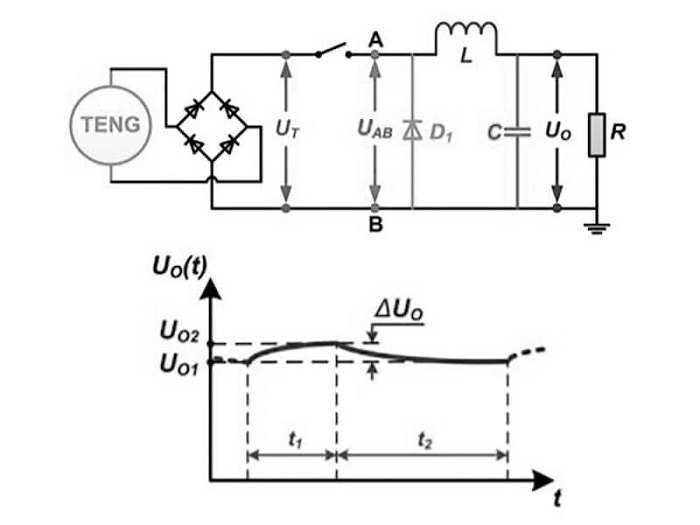By Maurizio Di Paolo Emilio, contributing writer
One of the main challenges with battery-operated connected devices is autonomy. An increasing number will have requirements for greater battery power or longer battery life but will not support bigger batteries. Some wearables, for example, might be medical implants; it’s not likely that a bulky battery will be an option for such devices. Battery technology is keeping up by making use of energy harvesting.
Energy harvesting can be an incredible advantage for devices with a small form factor, such as those that proliferate in the internet of Things (IoT). These small devices often require only tiny amounts of current, and energy harvesting from various sources can be a valuable design element.
Wearable medical solutions
Wearable devices for medical use are wearable devices that can detect, store, and transmit vital parameters (such as heart rate, oxygen saturation, and respiratory rate) measured in real time to report the overcoming of certain critical thresholds. According to the analysis by Frost & Sullivan — “Wearable Technologies in Clinical and Consumer Health” — the global market for wearable devices in the medical field will reach $18.9 billion in 2020.
Energy-harvesting solutions have been designed as an auxiliary power source for batteries or as an independent source for the permanent use of wearable devices without restrictions associated with energy consumption. Energy harvesting is considered an unreliable source in the sense that the availability of energy can vary considerably over time depending on the environmental conditions. It is possible to combine a source of energy harvesting such as vibration, heat, or solar with a rechargeable battery.
Triboelectric effect
Contact electrification is a process that produces surface charges on two dissimilar materials when they are contacted and separated. During this contact, each material develops a charge of opposite polarity. In recent years, there has been progress in developing systems for triboelectric energy harvesting called triboelectric nanogenerators (TENGs). These systems require a minimum of essential components: at least two layers of triboelectric material, physical separation between them, and electrodes for collecting electricity, in addition to a circuit of conditioning to maximize collection efficiency (see below figure).

Conditioning circuit for the TENG; t1 is when the switch is closed (energy stored by the LC unit), t2 when the switch is open (energy released by the LC unit).
The classic DC/DC buck converter is coupled with an AC/DC buck conversion circuit for the TENG, as shown in the above figure. Between the switch and the load resistance R, a diode D1, a serial inductor L, and a capacitor C are added in sequence. The switch is used not only to maximize energy transfer but to convert the incoming buck to the circuit. The switch can be realized by a micro-power voltage comparator with a MOSFET to integrate a self-management mechanism.
Thermal energy
Thermal energy harvesting is the process of capturing the heat that is freely available in the environment or represents the waste energy emitted by engines, the human body, and other sources and puts it into use. The direct conversion of thermal energy into electrical energy can be achieved through the Seebeck effect, in which a heat flow induced through an appropriately designed thermoelectric device produces a voltage and an electric current. The pair PN, which is the fundamental component of a thermoelectric generator (TEG), comprises a single structure of thermoelectric material of type P and N, each electrically connected in a series.
By placing many PN pairs electrically and thermally in parallel, it is possible to build a typical TEG module that generates a voltage proportional to the thermal gradient. Thermoelectric or TEG power-generation modules are already used in many applications, such as spaceships, in which they collect the heat emitted by the decay of a supply of radioactive material.
The emerging field of medical wearable electronics also offers the potential for thermoelectric energy collection by fueling devices with body heat.
Vibration energy
Vibration energy harvesting uses the natural low-level sources associated with rotating machines such as electric motors or the movement of the human body to generate hundreds of microwatts or individual milliwatts.
The piezoelectric transducers used are a subclass of asymmetric crystals. The asymmetry in the unitary cell of the material establishes the mechanism by which deforming the crystal leads to a small difference in potential.
To “tune” the property of a piezoelectric transducer, however, it is necessary to fully understand the frequency profile of the vibrating object and find its resonance frequency. For some applications, such as motors, the characteristics and resonance frequency of the vibrations can be well- known. For others, obtaining sufficient understanding requires measuring the vibration of the object with an accelerometer and analyzing the frequency characteristics of the data acquired through the fast Fourier transform (FFT) to find the resonance frequency.
RF energy
Radio-frequency (RF) wireless energy harvesting offers a potential for longer battery life in portable devices. Electromagnetic waves come from a variety of sources such as satellite stations, GSM, and wireless internet. An RF energy-harvesting system can capture and convert electromagnetic energy into a usable CC voltage. The main layout is composed of an antenna and the rectifier circuit that allows for converting the RF power or alternating current (CA) into a CC signal. An impedance matching network (IMN) ensures maximum power transfer between the RF source and the load.
To learn why power management is particularly important in small and wearable integrated systems, such as medical monitoring devices, object-tracking systems, and other applications that require low-profile and cost-effective mobile computing solutions, please visit EE Times for the complete article.
Advertisement
Learn more about Electronic Products Magazine





